PPMC-Transport is supported by its audience. When you buy through our links, we may earn an affiliate commission. Learn more
Written by Steven Schiller
Fact checked by Henry Speciale
Overinflating your tire results in tread wear, a bouncy ride, and the risk of a tire blowout. That’s why we need to adhere to the required psi for our type of tires.
In many cases, we also need to deflate our tires quickly to repair or move the vehicle. Therefore, it is important to know how to let air out of a tire.
Read the detailed guide below
Table of Contents
There are two ways to remove air from a tire using a screwdriver or needle-nose pliers.
If you want to let air out of tire fast, unscrew the valve or metal pin. Then, please put it back once you reach the ideal tire pressure.
Don’t forget to reattach the cap because it protects the valve from dirt.
You need to detach the cap first to find the metal pin.
Then, use a flathead screwdriver or needle-nose pliers to press the tip of the metal pin inward to release air from tire.
The air shoots out of the valve as long as you apply pressure on the pin. It stops the moment you lift the screwdriver.
Therefore, stop pressing the pin when you reach the ideal tire pressure.
A tire deflator is a brass plated device that lets you remove air from a tire more conveniently.
You can configure four tire deflators to your tire’s ideal PSI and simultaneously take the air out of all your car or truck tires.
Tire deflators are ideal if you have always been a victim of letting air out of tires prank. These automatic devices will save you time checking tire pressure and deflating your tire as needed.
To remove air from tire, it is necessary to identify the type of valve used in the vehicle.
The valve stem is a small cylindrical tube controlling the tire’s airflow. It is located in between the spokes of the tire. It protrudes on the tire for about 1-2 inches.
It protrudes on the tire for about 1-2 inches.
Some valves do not need tools to take air out of tire.
You can remove the cap from the valve and let it release excess air on its own. You can hear a hissing sound when it starts.
Deflating a tire is possible even without screwdriver. However, using the following tools will ensure you reduce tire pressure properly and safely.
A Tire pressure gauge is a tire pressure reading device. Please attach it to the valve before and after deflating a tire to ensure the required pressure range.
For instance, if you are stuck on sand or mud, you can get out of it without a tool by releasing about half the air in the tires.
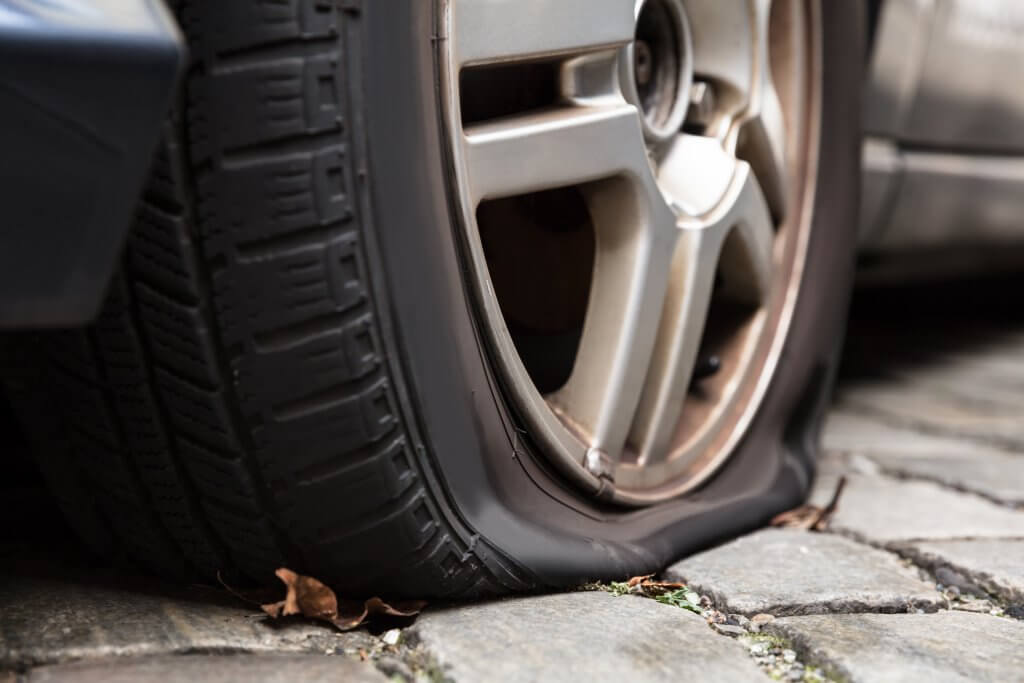 The recommended tire pressure ranges from 32 to 35 psi.
The recommended tire pressure ranges from 32 to 35 psi.However, it is safest to check the PSI recommendation of the vehicle manufacturer because the front and back tires have different PSI requirements.
A lever or hydraulic jack is a mechanical device used to lift the vehicle while deflating all tires. Look for the jack points of the car to mount it. They are located under your vehicle’s chassis, near the front and back tires.
With machine like a jack stand, the car or truck is safe while you let air out of car tire. Jack stands can support the weight of the vehicle while being lifted by hydraulic jacks.
All tires must have the recommended PSI by the car manufacturer regardless of tire brand. The front and back tires have different ideal PSI because of weight while driving.
The PSI recommendation can be found on the sticker inside the driver’s door. If not, check the vehicle’s manual.
If possible, write down the psi of each car tire so you won’t get confused.
Reading the tire pressure with a tire gauge does not let the air out. Instead, the tire pressure gauge has a small knob or plunger at the back part of it to inflate it.
Letting air out of hot tires is unsafe. When tires are inflated by heat, and you release the extra hot pressure, it may cause the tire to blow or catch fire. In this connection, it is advised to stop driving when the tires are too hot to touch and wait for them to cool down overnight or park for at least two hours at gas station.
Knowing how to let air out of a tire with or without tools is a good skill that drivers should not overlook because it can guarantee safe travel and longer service life for tires.
It would be great to invest in a tire pressure gauge to check your tire pressure regularly anywhere.
If you want to know more about the causes of tire overinflation, don’t hesitate to ask questions.
Categories FAQsI'm Henry, the content writer for PPMC Transport. We build our site entirely on experience and extensive market and customer research. My goal is to create a trusted platform where people can go to determine what is best for their vehicles in terms of safety and convenience. Keep an eye out for our useful guide!
- Speciale Henry
The notion that overinflated tires make the vehicle more responsive and increase fuel efficiency is pretty illogical. It’s a theory that doesn’t hold water, and if you feel otherwise, you’re always at liberty to give it a shot. If you’re wrong, you can always come back and learn how to deflate a tire.
Every car has an Owner’s Manual. This will tell you what level of tire pressure is appropriate for your car if you’re looking for optimum life and performance. Before we walk you through the steps on how to properly deflate your tires, let’s first look at why automobile experts are against over inflating a tire.
This will tell you what level of tire pressure is appropriate for your car if you’re looking for optimum life and performance. Before we walk you through the steps on how to properly deflate your tires, let’s first look at why automobile experts are against over inflating a tire.
Recommended air pressure levels are determined after taking into account the following factors:
There’s a long list of “Things that can go wrong with an overinflated tire,” but we’re just going to talk about the most obvious ones. The first one being the imminent risk of a tire blowout, which can be very dangerous.
Also, the safety features on your car have been designed in such a way that they’ll only serve you efficiently if the tires’ pressure is at the recommended level. In other words, an overinflated tire undermines the driver’s assistance functions.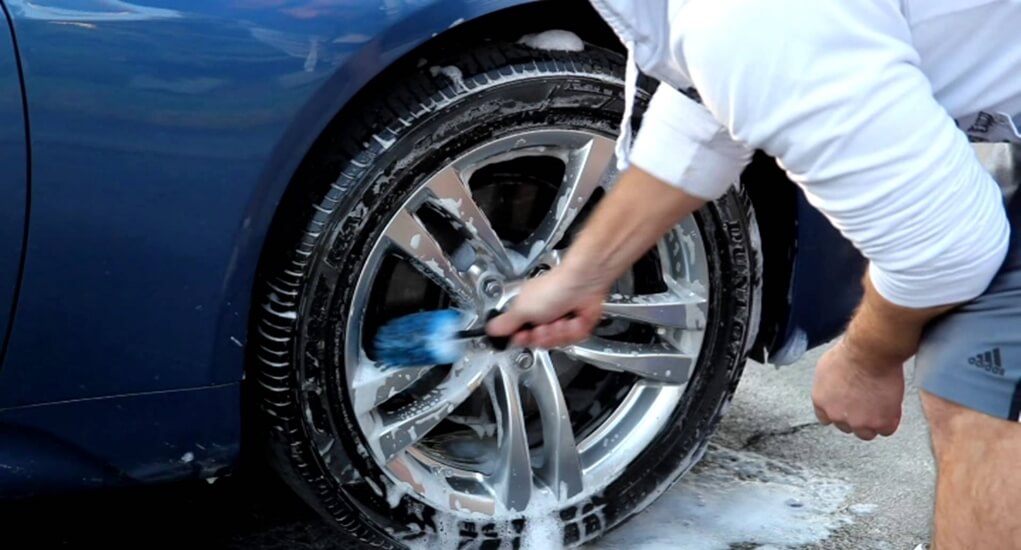
Overinflated tires are susceptible to damage. Think of them as overfilled balloons. If they get filled to maximum capacity, they become stiff and inflexible. Thus, exposing them to damage from debris, curbs or potholes.
Also, no one really enjoys driving around with overinflated tires—you feel every dip and bump in the road.
The general shape of your tires will look distorted if you make a habit out of it. Eventually, the tires will show increased wear and tear and decreased traction. To top it off, there’ll be a noticeable bulge in the tread’s center.
First off, gather the recommended tire pressure checking supplies. Typically, deflating an overinflated car tire is a process that involves two basic steps. First, you need to measure the tire pressure and then release the excess air.
A screwdriver and a tire pressure gauge are the only two things needed to complete both tasks. If you can’t find a screwdriver, look for any relatively sharp and firm tool. Something that you can comfortably use to press the metal pin found inside the tire valve.
Something that you can comfortably use to press the metal pin found inside the tire valve.
Before releasing the air inside the tire, you have to first figure out the current tire pressure. And that’s why the pressure gauge is so important.
A valve stem is the 2-inch long tube located inside the wheel and between the spokes. If you can’t find the valve, use your Owner’s Manual. There has to be a “how to check your air pressure” section in there, with a drawing of a valve and its pin inside.
You’ll never miss a cap on top of any tire valve. All tires have a valve cap, including bicycle tires. To remove the cap, slowly rotate it counterclockwise.
Connecting the air pressure gauge to the metal valves on your vehicle’s tires should not be a problem.
The air pressure gauge has something that resembles a clock. Whatever that “clock” says is the air pressure level inside your tires. If it’s above 40 PSI, you should deflate your tire.
Whatever that “clock” says is the air pressure level inside your tires. If it’s above 40 PSI, you should deflate your tire.
To release air, you’ll need your trusty screwdriver. Now that you know the valve looks a lot like a single-pin cable connector, all you have to do is reach for that center pin. Press it, and you’ll hear a hissing sound. That’s the excess air coming out.
While deflating the tire, make sure your eyes are always on the air pressure gauge. Otherwise, you’ll inadvertently release more air than you have to.
Don’t forget to cover the valve stem on all your tires once you’re done. Leaving any one of them open will cause a slow leak that results in a flatten tire. So unless you want to find yourself pulling over mid traffic, make sure you replace that cap.
If the goal is to make your tires lose air with a much quicker flow, unscrewing the metal pin inside the valve counterclockwise is all you have to do.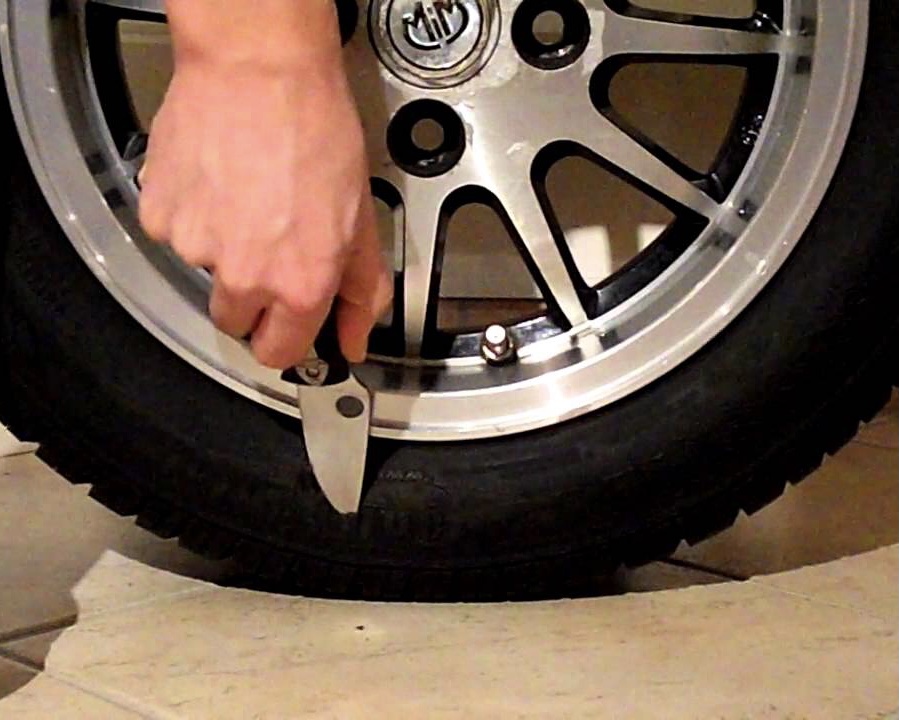 But you’ll need a pair of 5-inch long needle nose pliers to reach it.
But you’ll need a pair of 5-inch long needle nose pliers to reach it.
Higher pressure means you’ve got more air inside your tires. And more air means more time. However, you can opt for the quicker method, which involves completely removing the inner valve. The deflation will be a lot faster if the hole is much bigger.
There’s a long list of things that could cause your tires to deflate, but driving on a sharp object is top of that list. Just steer clear of sharp objects, and you’ll be good.
Driving around with overinflated tires is just as bad as driving around with underinflated tires or even a flat tire. You’ll be risking your life, seeing as you’re exposing yourself to a tire blowout as a result of increased operating temperature.
If your car is still relatively new, you’ll find a sticker inside the driver’s door telling you what your vehicle’s ideal tire pressure is. The recommended tire pressure level ranges from 32–40 PSI, on a cold day.
The recommended tire pressure level ranges from 32–40 PSI, on a cold day.
Are they the standard passenger tires? If they are, you can safely drive around with 20 PSI. Anything below that is flat, and the only workaround is to replace it.
According to Popular Mechanics, driving with excessive tire pressure means only a small area of the tire will be in contact with the road’s surface. In theory, this sounds like a good thing. But it’s not. Things are very different on the ground.
Something else worth noting is, a few PSI over the recommended level won’t necessarily expose you to any danger. The tire pressure usually fluctuates with temperature, so if you stay within the suggested cold tire pressure, you’ll be good.
Wondering why you always seem to have uneven tire wear? Well, that could only mean one thing. You’ve been driving around with overinflated tires. Always check your air pressure before driving anywhere, and deflate your tires if the gauge says there’s too much air.
Always check your air pressure before driving anywhere, and deflate your tires if the gauge says there’s too much air.
To deflate a tire, or even maintain it, is pretty easy if you take the time every now and then.
At the height of summer, it's time to get into the car and go on a trip: to see the world, so to speak, and show yourself at the same time. But truly interesting and breathtaking places are rarely found near busy roads, and in order to gain impressions and take good photos, sometimes you have to go to the ground and shake off-road.
Maxim Stroker
Therefore, in order to save your car, we recommend using simple tips from experienced jeepers.
The amount of atmosphere in the tires that we drive on asphalt is not always suitable for driving a car on the ground. For example, if you drive down a rocky broken road, from which sharp rocks stick out, then the pressure in the tires is less than 2. 5-3 bar, which is fraught with a cut. Therefore, experienced "off-road fighters" recommend pumping up tires from the standard 2-2.2 bar to 2.5-3. In addition, a slightly pumped wheel rolls better on large obstacles, which means you will also increase the cross-country ability of your vehicle.
5-3 bar, which is fraught with a cut. Therefore, experienced "off-road fighters" recommend pumping up tires from the standard 2-2.2 bar to 2.5-3. In addition, a slightly pumped wheel rolls better on large obstacles, which means you will also increase the cross-country ability of your vehicle.
But if you drive off onto a road soaked after rain, or sand dunes, then here you need, on the contrary, to bleed the air from the “cylinders”. This method is universal and suitable for all types of wheeled vehicles. The physics is simple: when we lower the wheels, the area of contact between the tire and the surface increases, which means that the grip becomes better, the ride is more comfortable and the suspension does not work for wear.
More specifically, when driving in mud, it is best to bleed the tires to the 1 bar mark. For driving on sand, it is not a sin to blow off the wheels to 0.5 bar. True, you need to remember that at such a low pressure you can “take off your shoes” right on the go.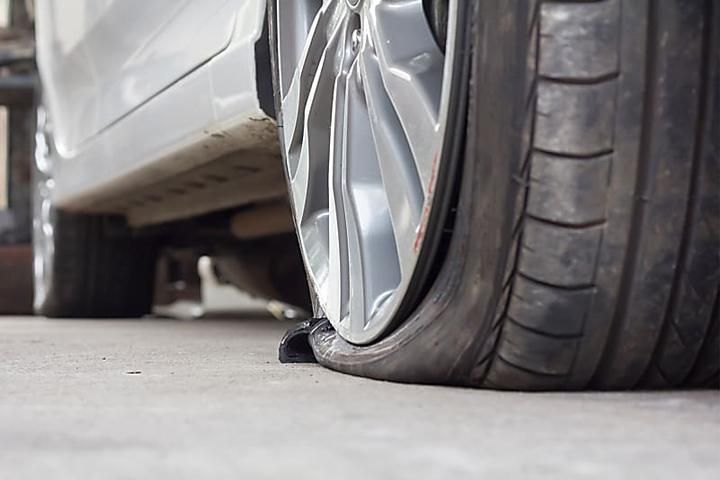 To prevent this from happening, you need not to turn the steering wheel to extreme positions and prevent slipping.
To prevent this from happening, you need not to turn the steering wheel to extreme positions and prevent slipping.
Remember: low tire pressure means driving at low speeds - no more than 30 km/h. With more active driving, the likelihood of loss of control is high. In addition, it is not recommended to lower the tires too much when descending from a steep, because when braking, the tires themselves will continue to rotate, and the rims will be blocked.
Bleeding pressure "by eye" is a dangerous event, because the uneven amount of air in the tires adversely affects the car's handling and off-road capability. The fact is that any car has a differential that redistributes torque between the wheels. The drive wheel, pumped up more, rotates easier, which means that the "diff" will give the lion's share of the motor's energy to it, and the car will pull to the side. In a muddy mess, this will immediately end with a landing on the bottom.
It is therefore best to use a pressure gauge to deflate the tires correctly. It is desirable that it be equipped with a special bleed valve (deflator), such as, for example, in the BERKUT ADG-031 high-precision pressure gauge, because then you can easily and quickly not only check, but also reset the tire pressure to the required values. By the way, this pressure gauge is in demand by professional jeepers who, in order to improve the car's patency on marshy or loose soil, overcome obstacles on half-flat wheels. To regulate the pressure, you can also use the hose from the compressor, which also has a pressure gauge with a "deflator". After reducing the pressure, the difference in patency and comfort when driving on dirt roads and off-road is very noticeable.
It is desirable that it be equipped with a special bleed valve (deflator), such as, for example, in the BERKUT ADG-031 high-precision pressure gauge, because then you can easily and quickly not only check, but also reset the tire pressure to the required values. By the way, this pressure gauge is in demand by professional jeepers who, in order to improve the car's patency on marshy or loose soil, overcome obstacles on half-flat wheels. To regulate the pressure, you can also use the hose from the compressor, which also has a pressure gauge with a "deflator". After reducing the pressure, the difference in patency and comfort when driving on dirt roads and off-road is very noticeable.
After you have overcome the off-road section and you have to return to the asphalt, you need to return the tire pressure to its original state. And here the BERKUT off-road compressor comes to the rescue, which is equipped with an extension hose with a pressure gauge and a “deflator” for more precise adjustment of tire pressure.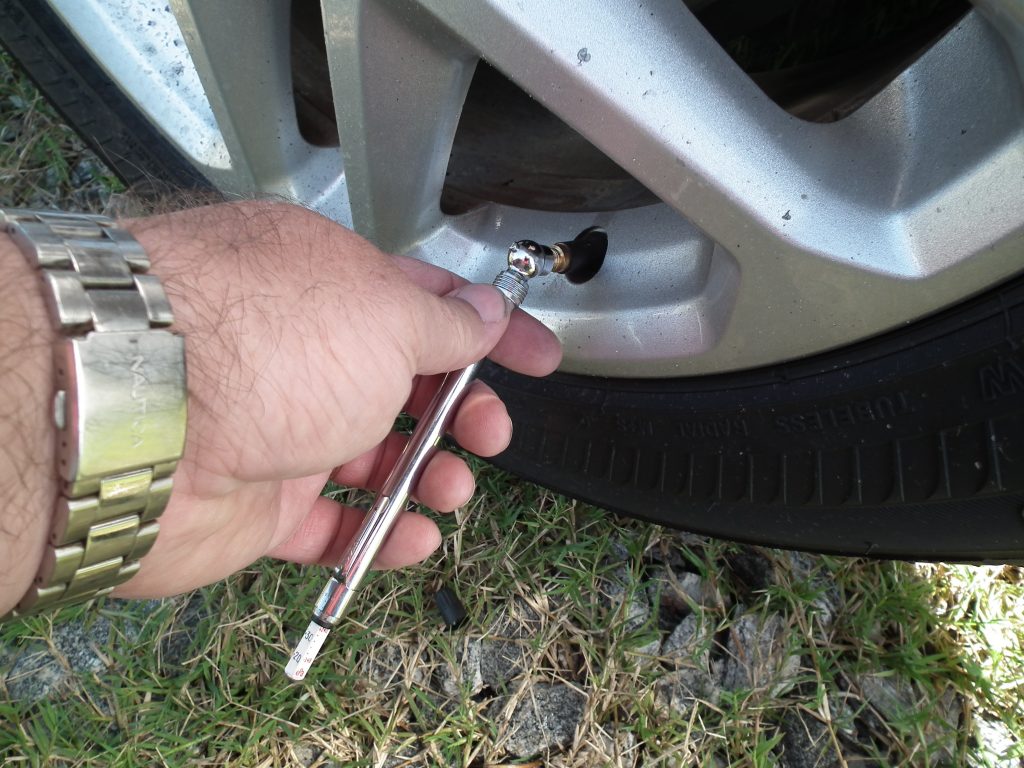 Thanks to its high performance, Berkut only needs a few minutes to pump up all the wheels of a car (even if it is an SUV) to the required atmospheres. A long twisted hose allows you to approach the wheels without dragging the compressor from place to place.
Thanks to its high performance, Berkut only needs a few minutes to pump up all the wheels of a car (even if it is an SUV) to the required atmospheres. A long twisted hose allows you to approach the wheels without dragging the compressor from place to place.
, on advertising rights
In August, the next innovation in the procedure for obtaining WU
674548
In August, in August, the next innovation in the procedure for obtaining the
674548
0009
Photo www.tgamobility.co.uk
It is not uncommon for tire pressure to decrease gradually over several days. You inflate them to the required level, but the tires again pass air over time. In this case, you should contact the tire shop, where they will determine the cause of the pressure loss. There may be several. We will look at the problems with tubeless tires, since most modern cars are equipped with them.
There may be several. We will look at the problems with tubeless tires, since most modern cars are equipped with them.
Ivan Flyagin
Disk damage usually leads to its deformation. This comes from hitting the wheel at high speed on the edge of the pit or on a steep and hard bump. Due to the loose fit of the tire to the rim, a partial air leak occurs. Keep in mind that damage may be hidden on the inside of the rim, while the outside of the wheel will look brand new, without any visual flaws.
Another possible reason for the gradual loss of pressure in the tires is the depressurization of the valve (or nipple) as a result of mechanical impact, or the ingress of the smallest dust particles into it. If the mechanism is in good condition, then air can leak in the place where its valve is attached to the disk. Sometimes you can fix the problem by pumping the spool with a few sharp and short presses.
Quite often the tire “catches” a nail or other sharp and large object on the road, which safely gets stuck in the place of the puncture. In this case, it serves as a stopper, only not completely sealed, so the air will slowly but surely bleed. If a nail hits a tire with a camera, it instantly bursts, and at high speed this is fraught with an emergency.
In this case, it serves as a stopper, only not completely sealed, so the air will slowly but surely bleed. If a nail hits a tire with a camera, it instantly bursts, and at high speed this is fraught with an emergency.
A tire can be damaged not only on the tread side, where the thickest and most durable rubber layer is located. Its side is also vulnerable to contact with sharp objects. Usually in this place there are cuts from friction on curbs, the edge of the track, protruding rebar and other hard and sharp protrusions. How quickly the rubber will lose air depends on the depth of the scratch. Usually damage to the sidewall causes irreparable damage to the tire, and it has to be replaced.
Whatever advanced rubber compound is used in the manufacture of a modern tire, in any case, its structure will respond to temperature changes to one degree or another. As a rule, in the cold, the rubber narrows, and as a result of a slight drop in pressure, the wheels sometimes have to be pumped up.